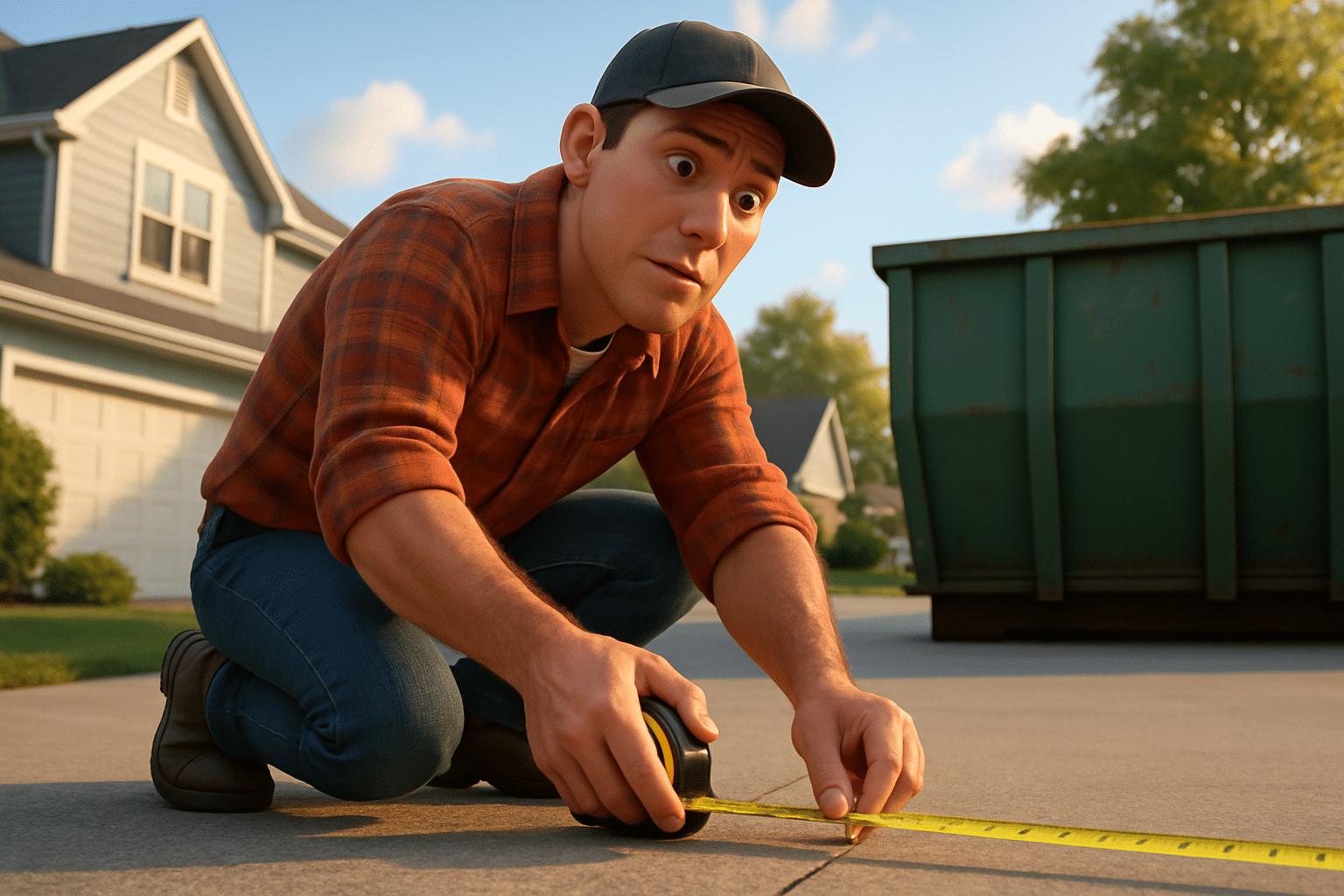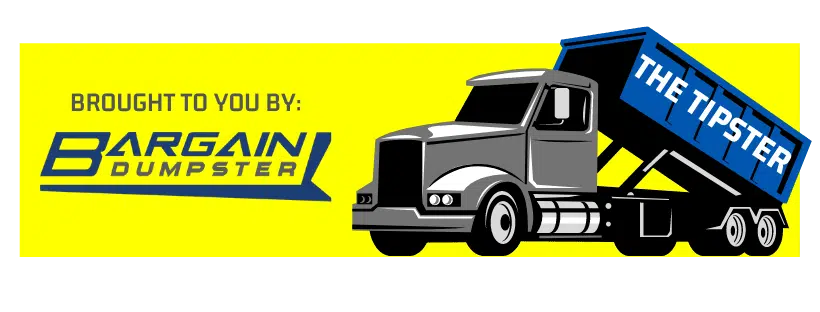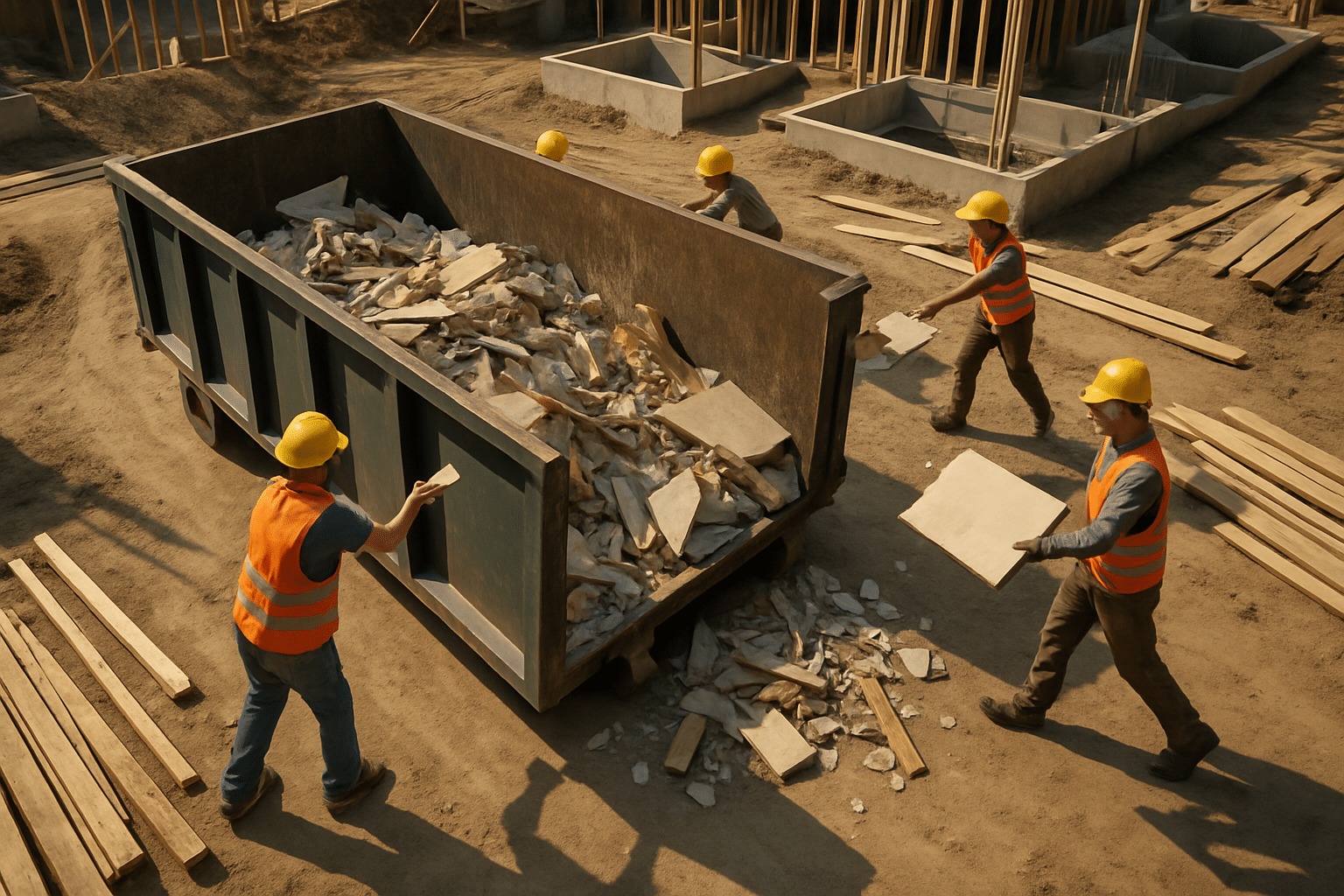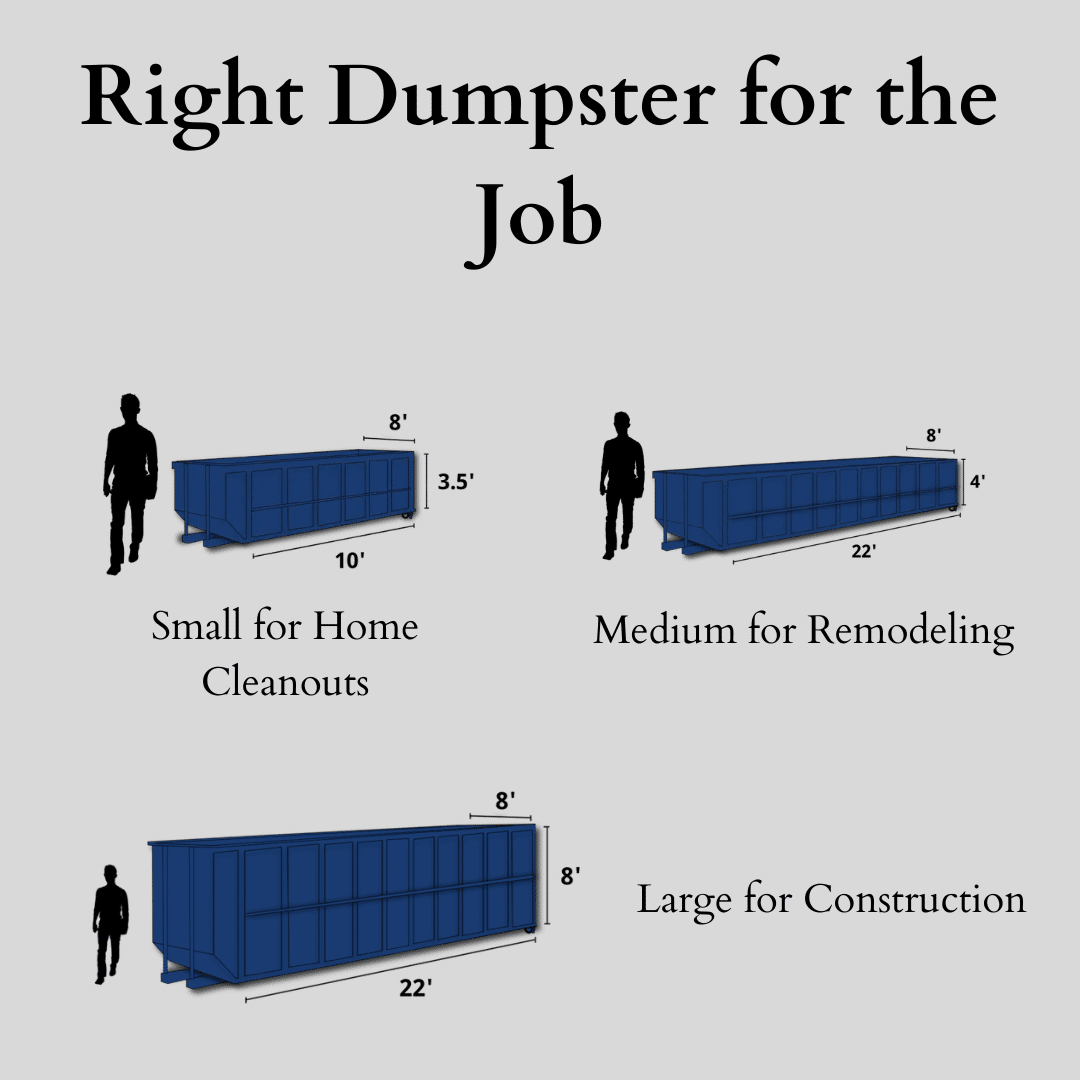How to Choose the Right Dumpster for Your Project Needs
Key Highlights
- To pick the right dumpster, you need to look at your project needs. Think about dumpster size and the type of waste, like heavy debris or yard waste.
- It is important to understand cubic yards. These show how much space standard yard dumpsters hold. You can find dumpsters from 10 to 40 cubic yards.
- Weight limits help you stay away from overage fees. Make sure items like shingles, drywall, or asphalt do not go over what is allowed.
- Big construction projects often need larger dumpsters. But some smaller dumpsters can work well for house clean-outs.
- Local rules, how much space you have, and what the rental companies say will all affect your choice for waste management.
Introduction
The success of any cleanup is all about picking the right dumpster. It does not matter if you have a big project or just a small one at your home. The key is to match what you need to the right dumpster size. Each dumpster can be a different size, and these are measured in cubic yards. This helps you hold the right amount of junk and trash. It is important to use the right dumpster for your cleanup so you do not run out of space or pay too much.
Knowing about your choices when picking a dumpster size will help you make better choices in waste management. You will also save money, because you don’t have to pay extra rental fees you do not need. It also helps you follow local rules. Let’s look at what you need to know to choose the right dumpster size for your cleanup.
Understanding Dumpster Types and Sizes in the US
To choose the right dumpster, you have to know about the different types and sizes that are out there. The most common types are roll-off dumpsters, front-load dumpsters, and yard containers. They come in several sizes, so you can pick what works best for your cleanup job. Most of them go from 10 to 40 cubic yards. This let you get the right dumpster for any job, from small messes at home to big construction projects.
It is good to know how a dumpster is measured. A dumpster is measured in cubic yards. A cubic yard is a way people use to talk about space using three numbers. This helps you see how much waste or debris can fit in a dumpster. Knowing about cubic yards makes it easy for you to choose the right dumpster.
Common Dumpster Types (Roll-Off, Front Load, etc.)
There are several kinds of dumpster you can pick for your waste needs. Each dumpster is made to handle certain kinds of waste and fit different amounts. A roll-off dumpster is good for bigger jobs. This type is often used for roofing projects or to get rid of heavy materials, like lumber or shingles. They offer lots of space in cubic yards, so there is room for all the waste you need to throw out.
Front-load dumpsters work well for ongoing waste management at business sites. They are easy to use. Pickups happen often and are simple. Knowing about each dumpster style helps you choose the right dumpster size. This lets you get rid of the right kinds of waste. Also, you will not have to pay extra fees for your dumpster.
Standard Dumpster Sizes and Their Typical Uses
Choosing the right dumpster size can make your cleanup much easier. It is important to pick the right dumpster for the job. A good dumpster size helps get rid of waste fast and with less trouble. Here is a table to show the different dumpster size options you can use. Picking the right dumpster size means you will not have to slow down or stop your cleanup. This way, you will save time and effort when you use the dumpster.
|
Dumpster Size |
Dimensions (L x W x H) |
Typical Use Cases |
|---|---|---|
|
10 Cubic Yards |
10 ft. x 7 ft. x 4 ft. |
This one is good for roofing jobs or to get rid of heavy debris. |
|
20 Cubic Yards |
20 ft. x 7 ft. x 4.5 ft. |
You can use this size for a house cleanout or garage demolition. |
|
30 Cubic Yards |
20 ft. x 8 ft. x 5 ft. |
This is great for a home remodel or if you need to fix up more than one room. |
|
40 Cubic Yards |
22 ft. x 8 ft. x 8 ft. |
Choose this for big commercial work or for a full-home remodel. |
Each dumpster size is made to work best for different types of jobs. The dumpster you choose needs to fit what you have to throw away. Picking the right dumpster size can stop you from paying extra fees. It also helps you put all your trash in one place during a demolition or cleanup. So, before you order your dumpster, think about what you will toss out and how much of it there will be.
Key Factors to Consider Before Choosing a Dumpster

Finding the right dumpster for your job means looking at a few key factors. First, think about the type of materials you have to throw out. For example, drywall, cabinetry, and asphalt all need a different size or type of dumpster. They each have different weights, so you need to pick the one that works best for you.
Next, think about how much debris your project will have. If you are doing a big demolition, you may need to get larger dumpsters. For a small cleanup, a compact dumpster will work. By thinking about these things, you can make waste management simple for your job.
Project Scope and Type of Debris
Knowing what you need for your project is a big part of getting good results. Here are some things to keep in mind:
- If you have yard waste or things like pieces of roofing, a smaller dumpster like a 10 yard dumpster will usually be enough.
- For heavy materials like concrete or asphalt, it is better to use strong and smaller dumpsters. This helps you stay under weight limits.
- If you are clearing out a whole property or working on a large renovation, you may want to get a 20 or 30 yard dumpster.
- For big demolition work, a 40 yard dumpster is the best choice because it gives you the most space.
When you pick the right size dumpster for what you throw out, you can make cleanup easy. You can also keep from getting hidden fees. The right dumpster size helps get the job done faster and keeps you from paying more than you should. Using the right dumpster is good for you and your cleanup.
Space, Placement, and Local Regulations
It is important to have enough space at the jobsite and to put the dumpster in the right spot. If the driveway is too small, big containers might not fit. In this case, you will need to use smaller dumpsters like a 10-yard dumpster. Make a plan for where to place the dumpster. It should not block any entry or exit. This makes sure people and equipment can still get in and out of the jobsite and keep working.
Also, it is good to know the local rules for using a dumpster. Some places need you to have special permissions. There can be weight limits, or you may have to follow rules about return service times. A few areas do not let you place a dumpster in some spots. Following all these rules can help you stay away from problems at the jobsite. Before you pick a large or small dumpster, make sure you learn about what the rules are.
Beginner’s Guide: How to Choose the Right Dumpster
Choosing the perfect dumpster does not have to be hard at all. You just need to know what you want to clean up. Think about the type of waste you have and how much of it there is. If your cleanup is small or for your home, pick a compact dumpster. For bigger jobs, you will need a dumpster that can take more trash and has a higher weight limit.
Before you go to the rental companies, it is a good idea to know about their return services for a dumpster. A good plan is important for waste management. If you choose the right dumpster, the cleanup can be easier. This is true for a roof or a building job. With the right dumpster, your cleanups will go well.
What You’ll Need to Get Started (Permits, Space, Information)
Planning to rent a dumpster means you need to do a few things first. Check your local rules before you start. For big home or building jobs, you might have to get a permit. Look at your jobsite and see if there is enough space for the dumpster. Make sure the area is clear so the dumpster can fit and sit the right way. You also need to know what kind of trash you will have and how much there will be at the jobsite. This helps you pick the right dumpster size.
When you do this upfront, things at your jobsite go well. It can stop you from having extra fees or problems later. When you pick the right dumpster size and know what you need first, you get the right dumpster and save time and money.
Step-by-Step Process to Select the Ideal Dumpster
Follow these steps to make dumpster rentals simple:
- First, try to guess how much waste you will have in cubic yards. This helps you pick the right dumpster size.
- Next, take a look at different dumpster size charts. Compare the choices people tell you about.
- Think about weight limits for a dumpster and if there will be extra fees for heavy debris.
- Make sure there is enough space at your place for the dumpster to fit. You do not want any issues when it shows up.
These steps will help you pick the perfect size dumpster for your project. This works for any materials you need to throw away, and you will not face extra fees or issues with waste.
Step 1: Assess Your Project Size and Waste Type
When you start your project, it is important to look at the size of the job. If you need to work with drywall, lumber, or cabinetry, or if it is a big project, you will need a dumpster that has more space in cubic yards. But if your work is small, like doing some easy kitchen repairs or light landscaping, a compact dumpster will be enough.
You also need to think about what kind of waste you have. If you have heavy materials like shingles or cement, you will need to use smaller bins. This helps make sure the dumpster does not get too heavy. When you check these things first, you can stay away from overage fees or problems with rental companies.
Step 2: Estimate the Amount of Debris
It is important to work out how much debris you have in a demolition job. There is often a lot of waste to deal with. This might be things like asphalt, broken cabinets, or old roofing shingles.
Check the size of the debris pile before you choose a yard dumpster. A 10-yard dumpster works well for small and light loads. If you have heavy or large items like lots of shingles or asphalt, you should go for a 30 or 40-yard dumpster. This makes sure the dumpster you get is not too big or too small. It can also save you money because you will not need to rent another dumpster later.
Step 3: Match Your Needs with Dumpster Size Options
Choosing the right bin size can make rentals much easier. If you do not have a lot of space or there is not much waste to get rid of, smaller dumpsters are the best option. If you have more to throw away, larger dumpsters or yard bins will work better for you.
Be sure to match the bin with the weight of your debris. Larger dumpsters, like the 40-yard size, can hold more waste. But, they still have to stay within their weight limits. When you pick the right size bin for your cleanup, waste management gets simple. It makes the job fast and good for any task.
Step 4: Check Weight Limits and Local Restrictions
Be sure to follow weight limits when you use a dumpster. If you go over these limits, you will have to pay extra charges. To keep away from these costs, sort your debris by how much space it takes and how heavy it is.
You need to know the local rules when you use a dumpster. Some kinds of waste, like dangerous materials, are not allowed in a dumpster. When you know what can and cannot go in, you follow the rules. This is important if you get larger dumpsters for big or heavy items.
Conclusion
Picking the right dumpster for your job is important. It helps make waste management easy for you. You should know about the different types and sizes of dumpster you can use. Look at key factors like how big the job is and what rules are in your area. If you know the amount of debris and the weight limits, you will get the perfect dumpster for your needs. Each step helps you find the best fit for your work. Getting the right dumpster also makes your project finish faster and is better for the environment. If you want the right tools, contact us now. We will help you choose the perfect dumpster for your waste management needs.
Frequently Asked Questions
How do I estimate the dumpster size I need?
To choose the right dumpster size, start by working out the volume of waste in cubic yards. You can use size charts to help you pick the right dumpster. Make sure the size you pick matches the kind of debris and how big the job is. A small cleanout will likely need a 10-yard dumpster. A large demolition project may need a 30 to 40 yard dumpster. The right dumpster size will help make your cleanup easier.
Can I mix different types of materials in one dumpster?
You can put a few types of materials together, like yard waste, drywall, and cabinetry. But there are rules when you deal with anything that is unsafe, like hazardous waste. It is good to talk to rental companies upfront about this. They will let you know what debris you can mix. This way, waste management becomes much easier for you.
What items are prohibited from being placed in a dumpster?
Hazardous waste like asbestos, cleaning fluid, or fuel that has not been treated is not allowed in a dumpster. There are rules that stop you from putting electronic waste or big appliances in it. You should check the rules for your area. Also, talk to rental companies to see what you can and cannot put in the dumpster.
How long can I keep a rented dumpster on my property?
Bargain Dumpster’s typical rentals include 7 days but you can extend that for as long as you need the bin. Be aware that beyond the initial rental period a per day fee will apply. If you know you will need the container for an extended period of time, discuss this with your representative. We will do our best to accommodate your project needs.



